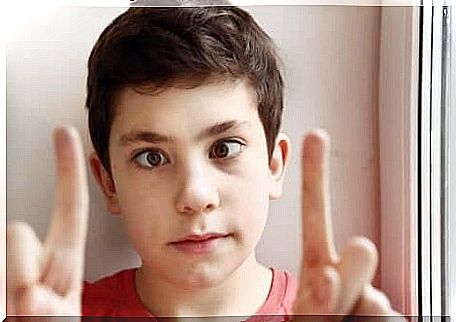What Is The Lazy Eye?
Untreated lazy eye can lead to functional blindness. This disorder usually appears in childhood and, if caught early, can be treated successfully. Treatment on adults can also have good results.

The so-called “lazy eye” is a condition in which we find ourselves facing a loss of visual acuity in one of the eyes (or both) without there being the slightest structural deficiency or abnormality at the level of the eye. eye-ball. This problem is also called amblyopia and it is a common pathology in children.
Lazy eye is estimated to be a problem that is present in 4% of children. If it is not treated for 8 or 9 years, it can turn into an irreversible visual defect. In fact, this pathology is considered to be one of the main causes of vision loss in developed countries.
The lazy eye does not achieve 100% visual acuity, even if an optical correction is made. In recent years, the use of electronic devices, such as tablets or cell phones, has been shown to accelerate amblyopia and exacerbate its symptoms.
What is the lazy eye?

Lazy eye, or amblyopia, is a disorder that leads to a decrease in visual acuity, without there being any abnormalities in the structures of the eyes and without detecting a disease causing this. problem. In this case, we do not get full vision, even if we use the best correction mechanisms.
Usually, this disorder affects only one eye; however, in many cases both eyes are affected. There are several types of lazy eye or amblyopia. These are the following:
- Strabic amblyopia. It takes place when the eyes are not perfectly aligned. This offers conflicting information to the brain, which eventually stops paying attention to one of the images and ends up canceling it out.
- Deprivation amblyopia. It corresponds to cases where there is a congenital cataract, a fall of the upper eyelid or “ptosis” or an opacity in the cornea. All of these conditions prevent proper visual development.
- Refractive amblyopia. It takes place when there is a very large refractive error in the eyes. The brain then stops providing information to the eye that is most affected. It is the most difficult type of lazy eye to diagnose.
Causes
Lazy eye is a consequence of the lack of development in the connection between the eye and the brain. To explain it briefly, the brain learns to ignore information that comes from one of the eyes and, sometimes, over time, from both eyes. This is not a problem in itself, although it may actually be the cause or effect of eye problems.
The most common cause of lazy eye is strabismus. In this case, the muscles fail to align the eyes adequately. As a result, the brain receives a different image from each eye. To resolve this confusion, he therefore chooses to systematically ignore one of these images.
One of the two eyes is therefore not used and, as a result, the area of the brain that corresponds to it does not develop. It is also common for the difference in images sent by the two eyes to be due to the fact that each of them has a different degree of myopia, hyperopia or astigmatism.
In these cases, the brain also ends up prioritizing one eye. Other conditions also cause visual decompensation which leads to amblyopia. The main ones are clouding of the lens and infantile cataracts, among others.
Other interesting data

The sooner the lazy eye is detected, the better the chances of treating it. Treatments for amblyopia in adults show a high degree of effectiveness, especially when the affected person is highly motivated and engaged in this process.
The American Association of Optometry recommends the first visual examination at 6 months. Ideally, the second exam takes place at age 3, then the next before the child enters school.
Amblyopia is sometimes not detected in time and can be confused with certain developmental and other disorders. A child with a lazy eye can have a delay in motor development and even appear to have autism, without this being due to a different cause of amblyopia.
On the other hand, children with lazy eyes tend to read more slowly than children with normal vision. This can obviously cause academic and social, even behavioral problems. Hence the importance of early detection of this problem.









